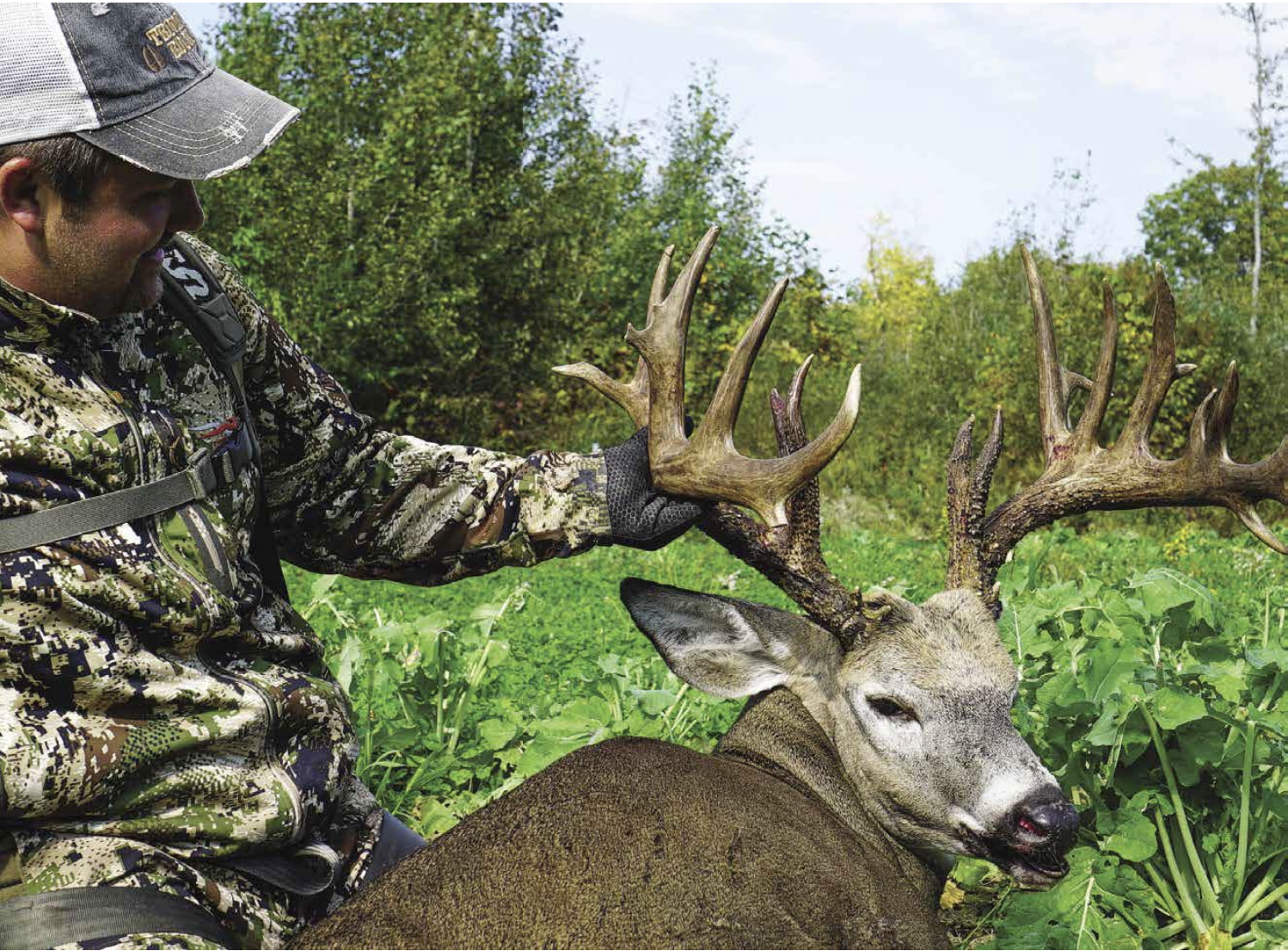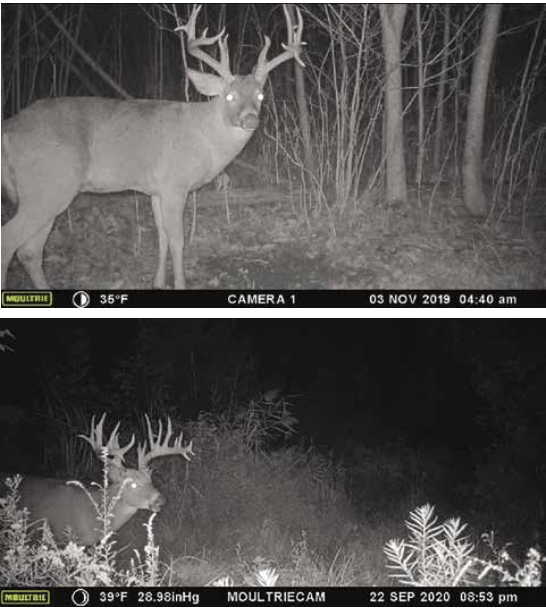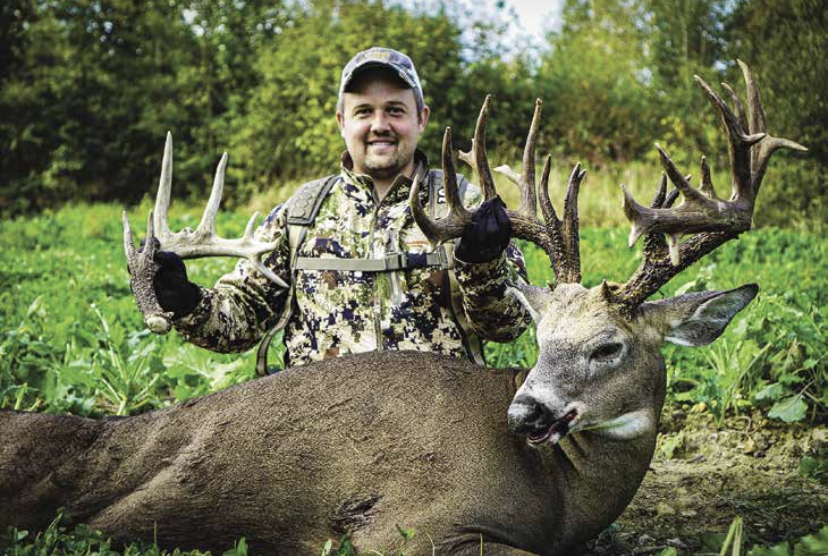World Class Results
 Ohio is a well-known producer of whopper whitetails. In fact, the Buckeye State leads the Boone & Crockett books as the top spot for killing a giant non-typical. But northeastern Ohio has not contributed much to the state’s big buck reputation. And Ashtabula County, in the Buckeye State’s northeastern corner, seems to have everything going against it for producing mature whitetails. Bordered by Lake Erie, the county is in the middle of the snow belt, where severe winters, small blocks of timber and intense hunting pressure make it tough for bucks to live long enough to grow monstrous antlers.
Ohio is a well-known producer of whopper whitetails. In fact, the Buckeye State leads the Boone & Crockett books as the top spot for killing a giant non-typical. But northeastern Ohio has not contributed much to the state’s big buck reputation. And Ashtabula County, in the Buckeye State’s northeastern corner, seems to have everything going against it for producing mature whitetails. Bordered by Lake Erie, the county is in the middle of the snow belt, where severe winters, small blocks of timber and intense hunting pressure make it tough for bucks to live long enough to grow monstrous antlers.
But Ryan Beran and his family are not deterred by those hurdles. They work hard to create and maintain habitat that attracts deer to their properties. That vigilance paid off for Beran this past September, when he killed a huge 4½-yearold buck he’d watched grow up. The 227- inch giant is proof that the family’s tactics are working. Here’s the story of Beran’s hunt for the huge buck and the methods he and his family use to manage their property.
LETTING A BEAST GROW UP
Beran first encountered the buck in 2018, when it was 2½ years old.
“I could tell he had the potential to be a great deer even then,” he said. “He had 13 points, with a split brow tine and a kicker. I found his sheds the next spring, and he scored 123, which is pretty amazing for a 2-year-old around here.”
Although the buck’s second rack was impressive, the buck was just getting started.

“The next summer, I started getting pics of him almost immediately on my mineral licks,” Beran said. “He was also a regular on my Whitetail Institute Imperial Clover plots, which are between the thick bedding cover and destination food plots farther out. The buck was just growing all summer, and when the archery season opened, he had 18 points and a drop-tine. I figured he would be right around 170, and that would be the biggest buck I’d ever killed. But I just kept thinking about the jump he made from the year before and wondered if he could do that again. If so, I’d be looking at something special. So, when he walked out on the food plot and fed to within 10 yards, I didn’t even draw my bow. I knew I had to let him go.”
The next spring, Beran found one shed from the monster buck, so he knew the buck had survived, and with some luck, the chance at a true Ohio giant seemed real.
“When we bought this property, it had been logged not long before, so the cover was very good,” he said. “We do our best to keep that habitat as good as we can by adding ponds and food plots. We tend to attract some of the best bucks in the area because of that, and I hoped that this deer would continue to feel safe and stay here.”
Beran’s hopes were realized when the buck started showing up at his favorite mineral sites in Summer 2020.
“In early summer, I could already tell he was going to be an amazing buck,” he said. “But I was not prepared for the jumps in growth I’d see as the summer progressed. His rack seemed to blow up every week. Early in the summer, I was getting three to four pics of him each week. But in late summer, it just got crazy. I’d bet nine days out of every 10, he’d be on my cameras. He wasn’t nearly that predictable the year before.”
With the archery season approaching, Beran believed the buck would be vulnerable at one of his favorite clover plots. “It was an hourglass-shaped plot where, if I waited for the right wind, I knew I’d have a good chance if he showed up to feed,” he said.
He also opted to use a crossbow, which is legal during Ohio’s archery season. “I almost always use a vertical bow, but I knew if I got a chance at this buck, I wanted every advantage,” he said. “I have a great crossbow, so decided I’d use that.”
As it turned out, Beran could have probably used a sharp stick to kill the giant buck he’d passed the year before. Opening weekend was warm, but with a good wind in his favor, Beran headed to the stand. The buck emerged from the bedding cover and into the food plot, where the favorable wind made the deer feel safe and gave a slight but critical edge to the hunter.
“He fed within easy bow range, and I made a perfect double-lung shot,” Beran said.
The buck tore off into the dense timber, and Beran was certain he heard the deer crash.
“Still, I gave it a couple of hours before looking for him,” he said. “I wanted people close to me to be with me when I found him. I called my wife, my parents and a couple of friends to join me on the blood trail, which was pretty easy to follow. I honestly didn’t think he was a 200- inch buck until we walked up on him. When I got to put my hands on him, I was pretty sure he was breaking that barrier with some room to spare.”
MANAGEMENT PAYOFF

As gratifying as it was to kill a worldclass deer, Beran was particularly pleased to see years of work creating the best cover and food pay off.
“I think it starts with our cover,” he said. “We have the best, nasty clear-cut timber habitat in the block, and most years, the best bucks in the neighborhood spend at least some of their lives here. I’m convinced that’s because of the cover.”
Right behind the bedding and security cover that makes bucks feel safe, Beran credits having superior food sources that attract and hold whitetails.
“We’ve developed a food plot system that ensures deer can have everything they want without leaving the property,” he said. “We have a 7-acre field on the edge of the property, and that comprises our destination food plot that keeps deer fed through a long winter.
“Within the property are interior food plots that slow deer down as they travel to the larger fields. They also create hunting opportunities, and one of these is where I killed my 2020 buck. When I create these, I like to situate them in places where deer already like to go — part of their natural pattern. This seems to work better than trying to attract them to a place that’s easier for me but uncomfortable for them.”
Beran plants various Whitetail Institute products, but Imperial Clover is always an integral part of his plan.
“Imperial Clover is one thing that always grows well here,” he said. “Soil treatment is critical, and to me, pH is the most important of all. If that’s not right, you can waste a ton of money on fertilizer that can’t perform correctly because the soil is too acidic. If your pH is 5.5, you’ll waste half the fertilizer you put down. Weed control is done through a combination of spraying and mowing. I mow my clover once in June and then about once every six weeks, depending on rainfall. I never mow in a drought, as it really stresses clover. I pay attention to the forecast and only mow once I know there’s rain coming.”
Water is a final component of Beran’s game plan.
“We put in ponds close to the food, and they really focus on these areas from summer into fall,” he said. “Water is super important to deer, and they’ll travel to find it if it isn’t readily available. We install ponds that are 10 yards wide by that same distance long, and 4 to 5 feet deep. It’s pretty flat here, so when rain fills them up, they hold water well.”
CONCLUSION
Although Beran’s Ohio giant netted 227 inches, it could have posted a higher net score, as the buck had broken off one of its drop tines on its death run.
“We looked for days but never did find that tine,” Beran said with a laugh. “If that had stayed with him, he might have gone over 230. But I obviously don’t care. Bucks like that are a rarity in this area. I was lucky enough to be able to watch one grow up on our property and then have a chance to tag him in his prime. Hopefully, he bred enough does during his life that another one like him might show up some day.”
